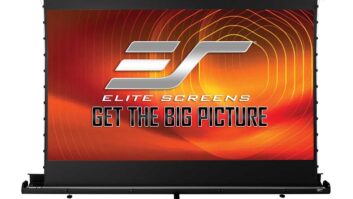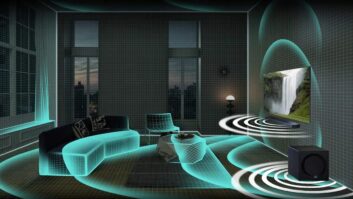It was one of dozens of otherwise innocuous and usually ignored CES appointment queries. Apparently Polaroid Eyewear, an unfamiliar company with a familiar name, has a booth at CES (South Hall 13616) at which they will exhibit passive Polarized glasses for 3D viewing.
Why, I asked myself, would anyone buy polarized 3D glasses? That’s like opening a store to sell little ketchup packets. Passive 3D glasses only work in movie theaters, and they’re free.
So, like a good little reporter, I asked why. The Polaroid Eyewear PR gal told me “many of the next generation 3D TVs from the major players set to launch at CES are expected to use circular [passive 3D] technology.”
To which I coolly responded, “WHAT?!”
Passive 3D HDTV is coming
We are going to see a new breed of 3D HDTVs at CES, ones using a passive 3D technology called “circular,” which doesn’t require active shutter glasses. The polarizing left eye/right eye filters are built into the LCD HDTV itself rather than in the glasses, as is the case with active shutter. This means passive 3D HDTVs use the same polarized glasses used in movie theaters and are a fraction of the price (Polaroid Eyewear’s run around $30).
Vizio is the first to start selling a passive 3D HDTV, the 65-inch Theater 3D Edge Lit Razor LED (model number XVT3D650SV), priced at $3,700. Vizio will be demonstrating it in the Le Fleur Ballroom in the Wynn at CES.
Earlier this week, LG introduced the second passive 3D HDTV, the as-yet unpriced LW6500, which will go on sale in selected markets soon after CES. LG’s passive 3D HDTV launch isn’t surprising. The company has been making passive panels in Korea, and earlier this year introduced two passive 3D consumer models into the U.K. market.
There are likely going to be others announcing passive 3D HDTVs at CES, but I admit this is all educated guesswork:
JVC has been selling a 46-inch passive 3D monitor and so is a top candidate to introduce a consumer model.
Sony also sells commercial passive 3D HDTVs for the broadcast market, so, maybe…
And I’ve heard Toshiba’s name bandied about in connection with passive 3D HDTV.
Again, I have no official, on-the-record confirmation for any of this. But I smell a trend.
Passive 3D: A good idea
Once I got over my initial shock about the introduction of a second 3D HDTV format, and after some discussion with folks in the 3D know, passive 3D seems like a good idea for consumers, primarily because the expensive, heavy, constantly-in-need-of-recharging battery-powered active shutter glasses would be replaced by the kind of 3D glasses you get at the movies, only fancier and cheaper. (And thank goodness they’ll be fancier. You could end up in a tussle with a minimum wage usher demanding you return your own glasses, but we’ll cross that bridge when we see it in 3D.)
And of course retailers would love it – they can stop worrying about unpowered glasses when doing a demo.
Yup, passive 3D HDTV is a good idea – if this were the eve of CES 2010 instead of CES 2011.
Passive 3D: A bad idea
The pixels are barely dry on the active shutter 3D HDTVs the major HDTV makers have been hoopla-ing for the last year. Now we’re getting ANOTHER 3D format?
What in the wide wide world of sports is a goin’ on around here? Who’s running this industry?
In a world of bad CE ideas, introducing two completely different 3D HDTV formats into an already skeptical 3D-at-home market ranks up there with the FUBARs (ask your local WWII vet what it means) of RCA CED, Philips DCC/Sony MiniDisc, DVD+/-/RAM, and HD-DVD/Blu-ray.
No, introducing both passive/active 3D is more FUBAR, actually. These earlier format wars made a semblance of business sense since the protagonists were fighting over lucrative standards royalties. Passive 3D is an open standard – anyone can do it, with no royalty payments due to competitors.
So why is passive 3D FUBAR?
Get it wrong the first time
I’m going to move from the usual subjective tense to a more chiding objective. Yes, I’m talking to you, 3D HDTV makers.
First and foremost, if you knew passive 3D was on the horizon, what was the rush to bring active shutter to market first? “Because we could” was essentially the answer I got – that manufacturers could produce active shutter sets faster and more cheaply than the more technically and manufacturing complicated passive and, therefore, active was the quickest way to get 3D to market.
Great, you could get active shutter 3D to market faster – but should you have taken it to market at all when you had another potentially more consumer-friendly approach in the offing?
And, active 3D wasn’t even ready for prime time – or any time – to begin with. Consumers groused almost immediately about the need for glasses, especially ones that needed batteries (glasses that need batteries? WTF…?). Sets were incompatible – one brand of $150 active shutter glasses didn’t work with any other brand of active shutter 3D HDTV. You tried to sell 3D HDTV to a tech-weary consumer who had just gotten used to the idea of upgrading to HDTV to begin with. You had little Blu-ray and less broadcast 3D content lined up. Great market preparation, folks.
As a result, retailers and manufacturers have been reduced to scrambling, selling 3D HDTVs as really good 2D HDTVs that also can do 3D, if and when there’s anything interesting to watch in 3D.
Hardly anyone – consumers, retailers, even many HDTV executives – understand active shutter 3D. They don’t know how to explain it, market it, demo it, or sell it. Shocker: consumers don’t give a rat’s behind about 3D.
Before you throw another confusing 3D technology into the 3D mix, don’t you think you ought to have gotten the first one straight?
It’s a passive future
I understand what’s going on. For LCD HDTV makers, passive 3D eliminates all the inferior refresh rate issues when compared to plasma 3D. Since LCD is the dominant HDTV technology, passive 3D HDTV may well become the dominant 3D HDTV format in a few years – in technology, convenience always trumps quality, and passive 3D is way more convenient than the higher-resolution active 3D. Plasma-based active shutter 3D HDTVs could become the elitist loyal opposition, sort of the D-SLR to passive 3D’s point-and-shoot, the way 2D plasma is now to 2D LCD.
And introducing passive 3D is a way for the LCD HDTV makers to cut their active 3D losses early. We tried it, it didn’t sell, let’s move on quickly as if nothing had happened.
It’s going to take a few years of 3D market FUBAR before this active/passive business works itself out, and could result in complete consumer petrification – they may not buy anything until you people get your 3D standards act together. In the meantime, you’ve left it to poor tech reporting schmucks like me and pimply retail sales staffers to deal with buyer bafflement.
But this 3D market FUBAR could have avoided with just a little less penny-wise/pound-foolish greed and a little more brain power applied first. Is the profit – if any – on selling just 3 million incompatible active 3D HDTVs worth the 3D FUBAR era you are about to lead us into?













